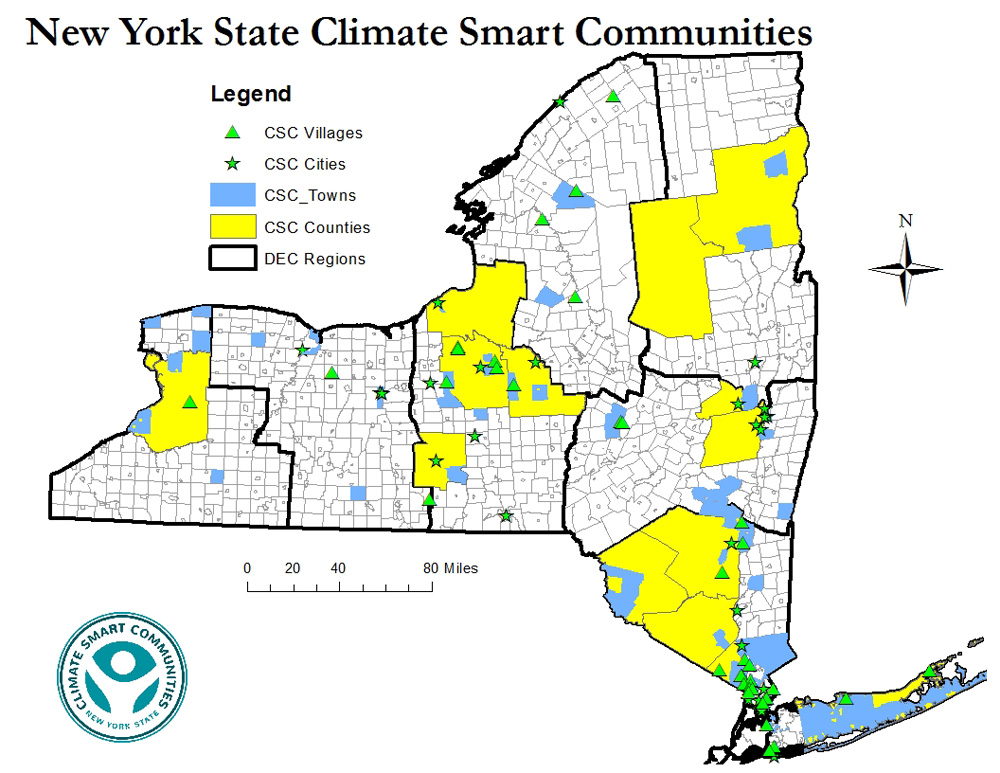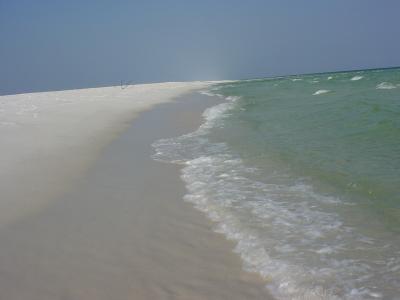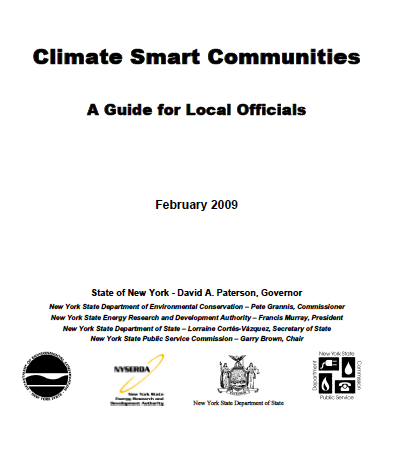New York’s Climate Smart Communities Program

Posted by
Rachel GreggProject Summary
The New York Climate Smart Communities program is a partnership between local communities and state agencies designed to address climate change. Communities voluntarily sign the Climate Smart Communities Pledge and receive technical support and guidance from state agencies. As of 2021, 345 communities are part of the program, most of which are located along the Atlantic and Great Lakes coasts.
Background
New York will experience increased average temperatures, flooding, extreme weather events, runoff, water supply and quality issues, droughts, shifting habitats and species’ ranges, and sea level rise as a result of climatic changes (Frumhoff et al. 2007). The New York Climate Smart Communities Program is supported by state agencies, including the Departments of Environmental Conservation, Public Service, State, Transportation, and Health, the Power Authority, and the Energy Research and Development Authority. It combines mitigation and adaptation responses to limit or eliminate the effects of climate change on local communities (e.g., towns, villages, cities, counties). Benefits of local community involvement include cost savings for local taxpayers through reduced energy costs and increased energy efficiency, increased opportunities for green energy job growth, and improving existing and designing new infrastructure to withstand the effects of climate change (Department of Environmental Conservation 2009).
Implementation
The Climate Smart Communities program provides communities with technical and financial support and guidance. As part of the program, each community must adopt a model pledge to reduce greenhouse gas emissions and prepare for climate change. The Climate Smart Communities Pledge may be adopted by any town, village, city, or county in New York State. In 2014, the program added a certification process for interested communities. The program also includes mandatory, priority, and optional actions. In order to be certified, communities are required to designate a climate change coordinator position and task force to organize the community’s efforts. Priority actions include:
- Conducting a greenhouse gas inventory for the community and government operations
- Developing goals and climate action plans for the community and government operations
- Conducting a climate vulnerability assessment
- Educating local businesses, organizations, and citizens on efforts that can be taken
- Contributing lessons learned and stories to the Climate Smart Communities Program.
For each action, recommendations are provided on implementation, including project costs and resource needs, as well as case study examples where possible. For every action taken, communities earn points towards certification.
Outcomes and Conclusions
To date, 345 communities have joined the program and 70 are certified. The Department of Environmental Conservation acts as the lead of the program and runs annual grant funding cycles to provide matching funds for implementation of mitigation and adaptation actions by certified communities.
Citation
Gregg, R. M. (2021). New York’s Climate Smart Communities Program [Case study on a project of New York Department of Environmental Conservation]. Version 2.0. Product of EcoAdapt's State of Adaptation Program. (Last updated September 2021)








